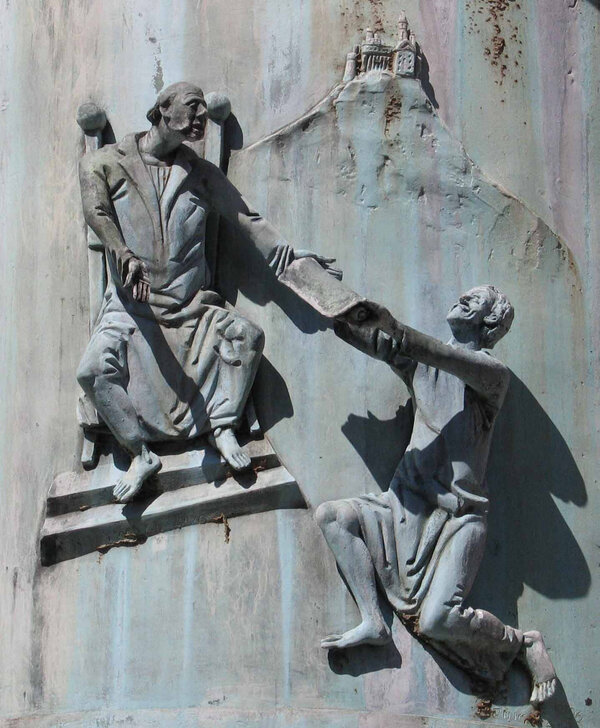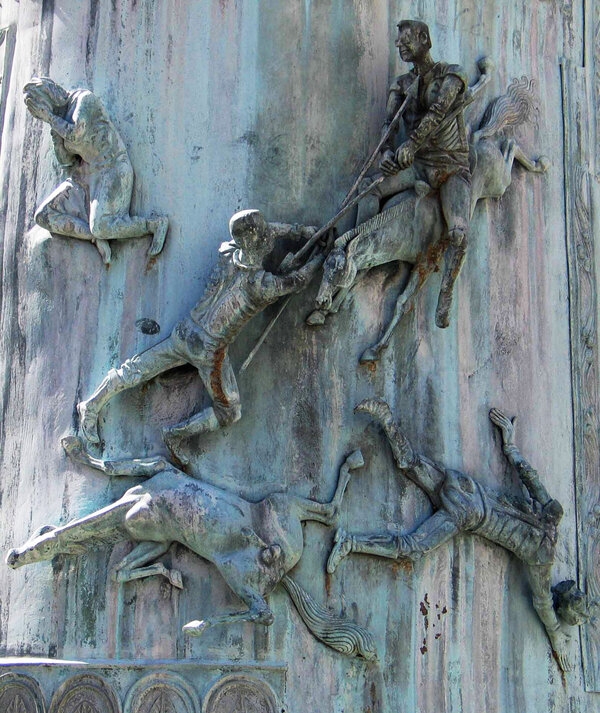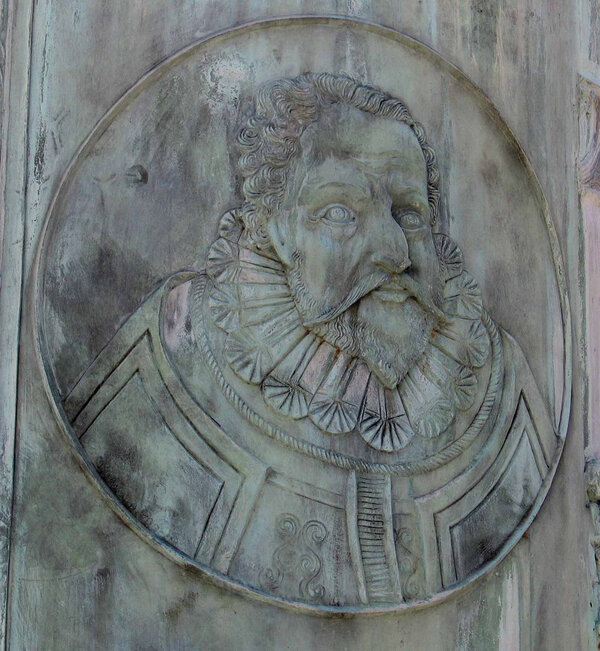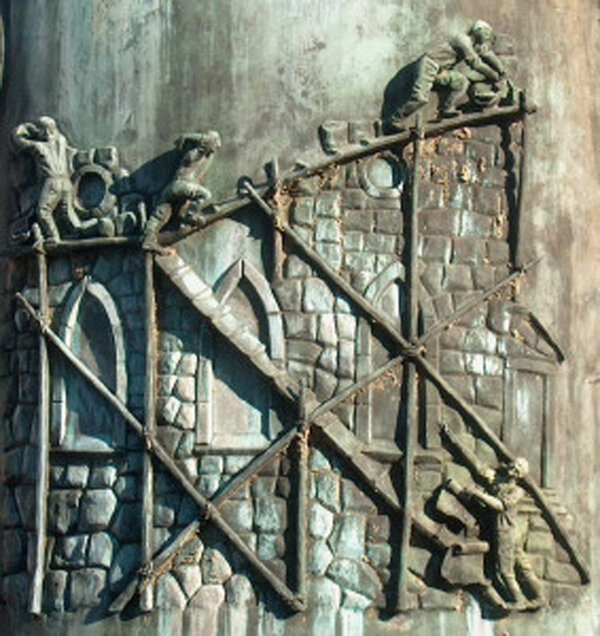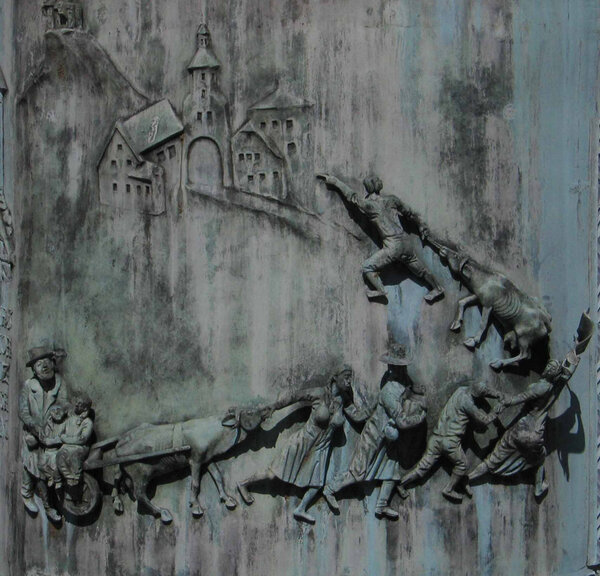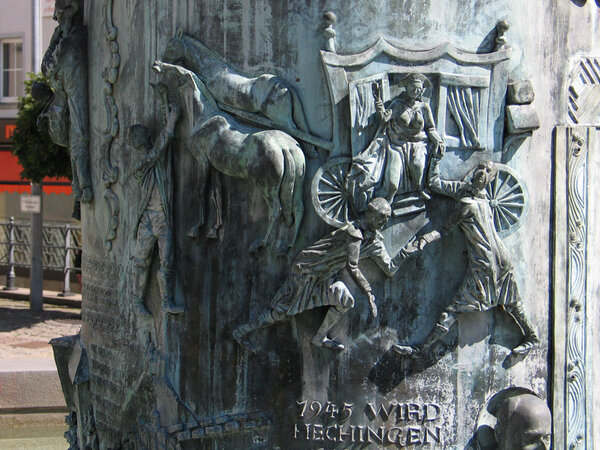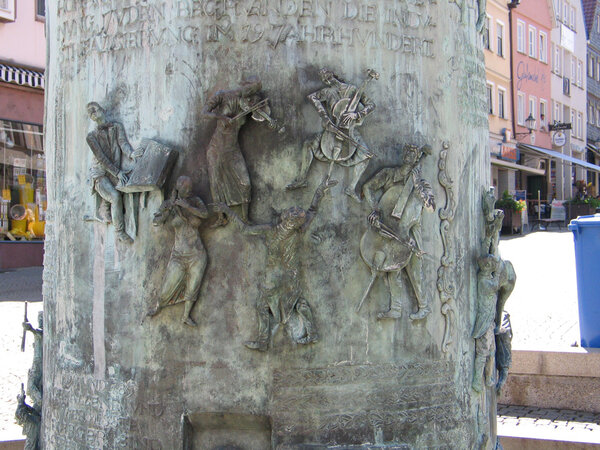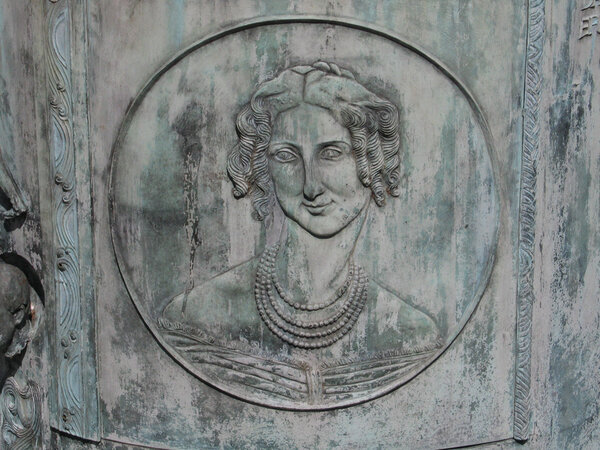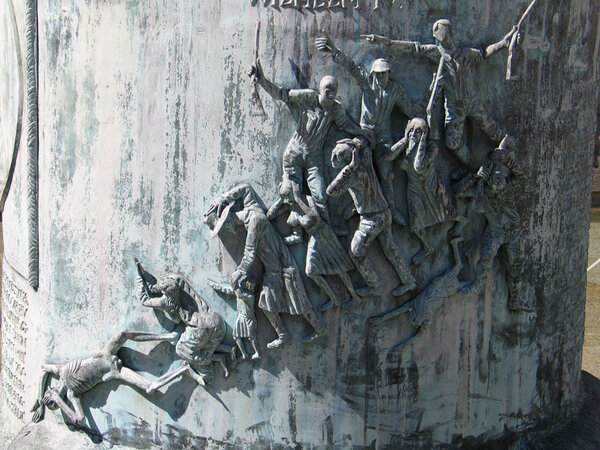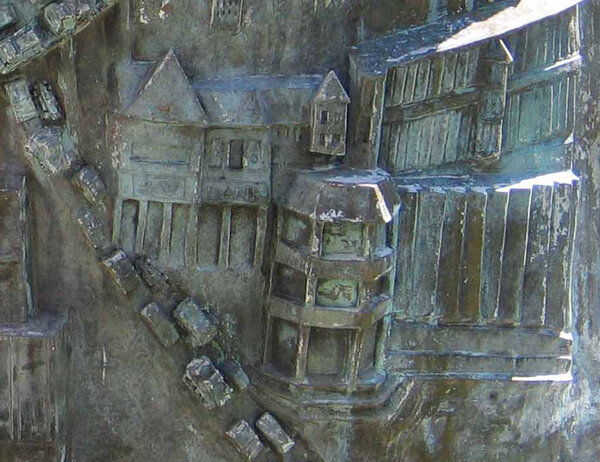The history of the town of Hechingen is told in short texts and on reliefs on the column of the fountain. Facing the town hall, begin your trip through time with the writing at the very top of the fountain. Read the texts and reliefs in chronological order from the top in a downward counter clockwise spiral encircling the fountain. The following texts correspond to those on the fountain.
Celts, Romans and Alemannians
Celts, Romans and Alemannians settled in the area of Hechingen. A testament to this time is the Villa Rustica in Stein. (www.villa-rustica.de)
Settlement of Alemannians and city of the Hohenzollern counts
786 Hechingen is first mentioned as "Hahhingum". The castle and family of the Hohenzollern make their first appearance in history in 1061. The foundation of the town is completed in 1255.
Distribution of the estate and fraternal strife
Family disputes and armed conflicts weaken Hohenzollern rule. 1402 Distribution of the estate between Prince Öttinger and Prince Eitel Frederick I. The first castle was destroyed in 1423.
Prince Eitel Frederick and the Renaissance
Prince Eitel Frederick IV. (1576 - 1605) leads Hechingen to becoming the illustrious residence of the Princedom. Construction of the large Renaissance castle and town fortification with the Lower Tower. Foundation of St. Luzen Monastery Church and the Pfründe Hospital.
Jews in the town
Under the protection of the counts, Jews have been coming to Hechingen since 1500 and become an active part of the community. As an agent of the court, Madame Kaulla commands respect for miles around. Jews create the industrialisation in the 19th century.
You can find out more about the jewish history of Hechingen on the pages of the Old Synagogue.
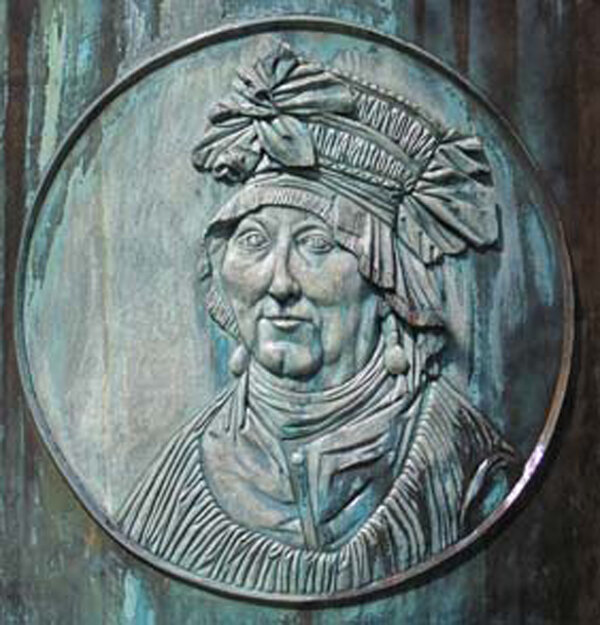
Orpheic Hechingen
The court often had a rich musical life. The sons di Lasso, Hector Berlioz, Franz Liszt and many other great musicians hold concerts in Hechingen.
By the way: You can find Villa Eugenia, centre of "Orpheic Hechingen", 300 metres away in the Princes’s Garden.
The last prince and princess
Princess Eugenia carries out numerous deeds for the good of society. The line of princes of Hohenzollern-Hechingen ends with the death of Frederick William Constantine. From 1850 to 1945, the principality passes to Prussia. Construction of the third castle under King Frederick William IV.
World wars and persecution of the Jews
195 and 785 killed and missing citizens are victims of the two devastating world wars. Under the Nazi dictatorship, fellow jewish citizens are driven out and executed.
1945 Hechingen is occupied by French troops. The town accepts over 4000 people who have been driven from their homes.
Hechingen today
1972 Hechingen loses its status as district capital. The Hohenzollern states cease to exist. The neighbouring communities of Bechtoldsweiler, Beuren, Boll, Schlatt, Sickingen, Stein, Stetten and Weilheim join Hechingen to form a common town. The town’s economy becomes more dynamic, social stability improves and its culture becomes more diverse. Hechingen becomes a European city. The new castles and residences: Progress, infrastructure.
The sculptor Prof. Klaus Ringwald created this fountain in the years 1994 - 1998.
Casting: Hans Mayr, Munich 1997.

